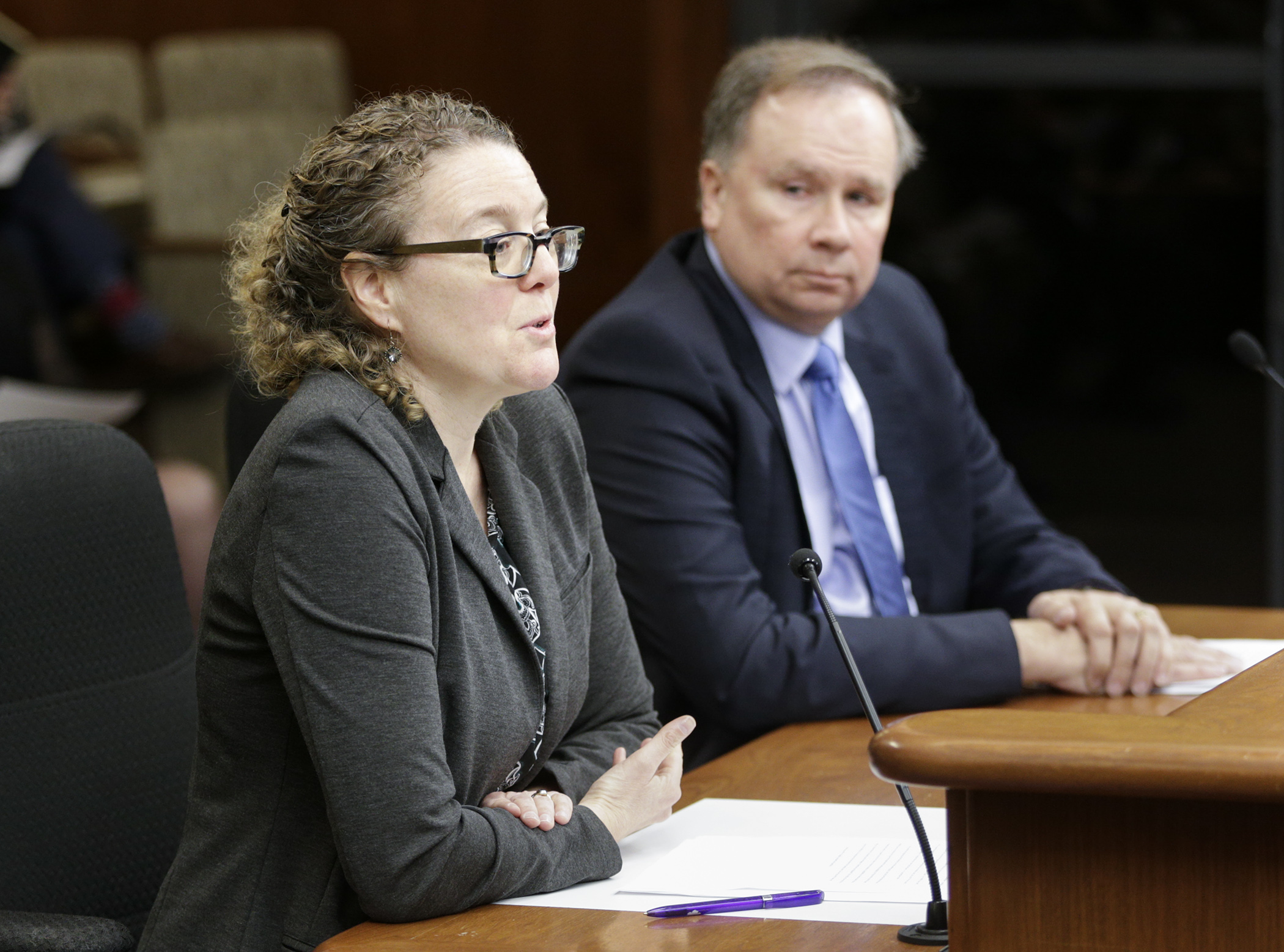Cameras in the courtroom? Consent would be required by many under proposal in House

Openness in courtroom proceedings against the assurance of justice are among arguments for and against a cameras-in-the-courtroom bill.
Sponsored by Rep. Jim Knoblach (R-St. Cloud), HF3436, as amended, would prohibit, in most cases, the recording or broadcast of any criminal matter without the express consent of the defendant, victim, prosecutor and witness under subpoena along with permission from the presiding judge.
It would return policies on audio and video in the courtroom to where they’ve been serving us well for decades, Knoblach said.
“I believe that it should be a substantive right for the defendant to waive or not and a substantive right for the victim to waive or not,” said Rep. Debra Hilstrom (DFL-Brooklyn Center), a prosecutor by trade.
The bill was held over Wednesday by the House Public Safety and Security Policy and Finance Committee for possible omnibus bill inclusion. A companion, SF1882, sponsored by Sen. Jerry Relph (R-St. Cloud), awaits action by the Senate Judiciary and Public Safety Finance and Policy Committee.
Under current rules, electronic coverage of district court proceedings is allowed before a guilty verdict has been returned or a guilty plea accepted if the judge and all parties to the case agree to the coverage. Cameras and audio recording devices are allowed in state appellate courts under conditions set forth by rule.
WATCH Committee discussion of the bill
The Minnesota Supreme Court is considering expansion of a two-year pilot program that allows cameras and audio recording equipment in some criminal court proceedings with exceptions that include juvenile, domestic violence or sexual misconduct cases. A previous project looked at civil cases.
“What you end up with in current criminal proceedings in Minnesota under the Supreme Court’s pilot project rule is that defendants who have committed terrible crimes, and who are being sentenced by the court, get to be shown on television or on a website or the newspaper,” said Mark Anfinson, general counsel for the Minnesota Newspaper Association. “… Why is that a bad thing?”
Anfinson said 40 other states allow cameras in a courtroom.
A Dec. 20, 2017 report from the Advisory Committee on the Rules of Criminal Procedure recommends the pilot procedures for audio or video coverage of criminal proceedings be permanently codified. Comments to the report are being accepted through March 26; a public hearing on the report is scheduled April 25.
“The results of the pilot projects has shown that cameras cause absolutely no discernable problems for anybody,” Anfinson said. “… Members of the Minnesota public, your constituents, residents of this state, have for the first time in the state’s history been able to see what actually occurs in courtrooms.”
Rep. Dave Pinto (DFL-St. Paul), Rep. Jamie Becker-Finn (DFL-Roseville) and Rep. Jack Considine Jr. (DFL-Mankato) each noted the bill would not prohibit someone from attending a hearing.
“Courtrooms are open … and will continue to be,” Pinto said.
Among arguments made by proponents are that potential coverage can hinder cases. For example, a sexual assault victim may be reluctant to report a crime for fear of having to testify.
“If reporting a crime means the world can watch your report on the 10 o’clock news or see it forever on YouTube or elsewhere, some victims and witnesses will decide it’s just not worth it,” Knoblach said. “ … By its nature, the most media-worthy cases will also be those that are the most heart-rending for victims and families.”
He added media coverage does nothing to help courts fulfill their primary purpose of finding truth and rendering judgment.
“We cannot risk creating any further barriers for victims seeking justice,” said Caroline Palmer, public and legal affairs manager for the Minnesota Coalition Against Sexual Assault. “If we lived in a society where victim credibility wasn’t continually challenged I wouldn’t be here today and I would be celebrating.”
Related Articles
Search Session Daily
Advanced Search OptionsPriority Dailies
Ways and Means Committee OKs proposed $512 million supplemental budget on party-line vote
By Mike Cook Meeting more needs or fiscal irresponsibility is one way to sum up the differences among the two parties on a supplemental spending package a year after a $72 billion state budg...
Meeting more needs or fiscal irresponsibility is one way to sum up the differences among the two parties on a supplemental spending package a year after a $72 billion state budg...
Minnesota’s projected budget surplus balloons to $3.7 billion, but fiscal pressure still looms
By Rob Hubbard Just as Minnesota has experienced a warmer winter than usual, so has the state’s budget outlook warmed over the past few months.
On Thursday, Minnesota Management and Budget...
Just as Minnesota has experienced a warmer winter than usual, so has the state’s budget outlook warmed over the past few months.
On Thursday, Minnesota Management and Budget...